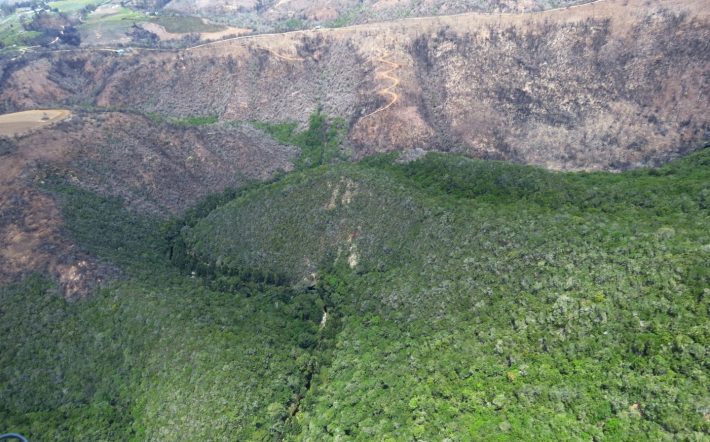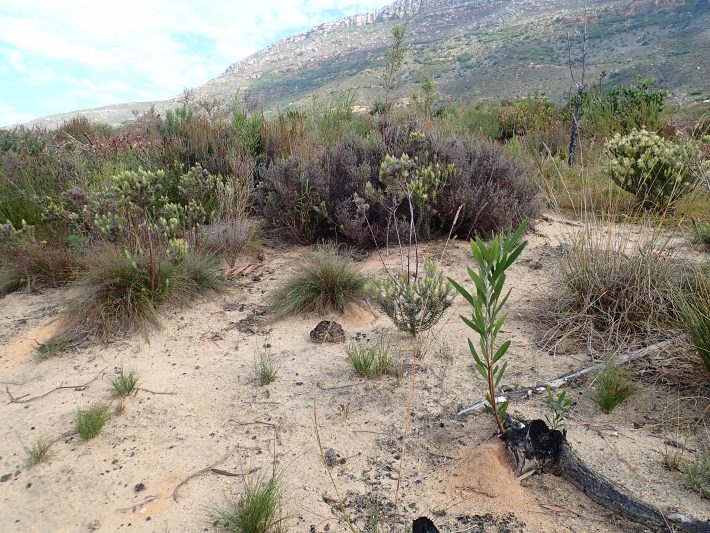A new lens on an old problem: changing data resolution provides new insights for alien species management
SANParks press release.
In a new study, researchers from SANParks and the Centre for Invasion Biology put a theoretical commonness framework to the test to demonstrate how changing the resolution of data used in alien species management can revolutionize how we manage them. The findings are published in Journal of Applied Ecology.

Alien plants are those that are introduced by people from other parts of the world to areas where they did not occur naturally. These plants have few natural enemies in their new range and can have very dramatic impacts, taking over from naturally occurring species, displacing birds and other animals and impacting people through, for example, decreasing agricultural productivity, increasing fire frequency and using large amounts of water.
Managing alien plants is challenging and there is often a trade-off between prioritizing which species to tackle and ensuring that priority areas are kept free of aliens. In the study, published in the Journal of Applied Ecology, the researchers use a “Commonness framework” to quantify patterns of plant invasion when viewed at increasingly coarse spatial resolution. The framework uses fine-scale information, from a staggering 10 000 sample plots, to classify species into one of nine commonness classes based on their population size, the extent of their range and how clumped or dispersed they are. Each commonness class can be associated with a particular best fit management strategy.
The study demonstrated that different management strategies were appropriate for the same species in different parts of its invasive range, and how these nuances are often obscured through use of coarse scale data that frequently drives management decisions. The authors further demonstrate how to use the range dynamic metrics in the framework to tailor management interventions to minimize the spread of invasive alien plants.

Dr Chad Cheney, lead author of the study, a park planner at Table Mountain National Park, South Africa, and former PhD student at the Centre for Invasion Biology at Stellenbosch University, says “Use of this framework allows us to reconcile area based and species based management strategies by determining the phase of invasion of each species in each management unit and tailoring the management strategy accordingly”.
Dr Nicola van Wilgen, a South African National Park scientist and research associate of the Centre for Invasion Biology at Stellenbosch University, who assisted Chad with the data analysis says “There are a number of management strategies that are currently under-utilized by managers. For example, reconnaissance of an area to detect individual plants that if left untreated would lead to invasion of new areas”.
Professor Karen Esler of Stellenbosch University, who contributed to the paper, adds: “We often visualise a particular species’ commonness based on what we observe in the broader landscape. As a result, eradication from a particular area is not considered because the species is known to be widespread. Our data however show that there are several species that could be targeted for eradication in the study area.”
Professor Melodie McGeoch of Monash University, in Australia, who published the original framework, notes “Science is always seeking to develop novel theoretical approaches, but to be able to demonstrate their utility in practice is the true hallmark of success. We look forward to continued advances in this field.”
Associate Professor Llewellyn Foxcroft, a South African National Parks’ scientist, and Core Team Member of the Centre for Invasion Biology at Stellenbosch University, who contributed to the paper, says: “Protected areas have a particular responsibility to minimize the impact of invasive species. This study provides us with significant insight into how we can better achieve this.”
You can read the the full article for free (for a limited time) here:
Cheney, C., van Wilgen, N.J., Esler, K.J., Foxcroft, L.C. & McGeoch, M.A. Quantifying range structure to inform management in invaded landscapes. Journal of Applied Ecology. DOI: doi/10.1111/1365-2664.13765
Media contact:
For further information, please contact Dr Chad Cheney: T: +27 (0) 72 424 0404; chad.cheney@sanparks.org
Like what we stand for?
Support our mission and help develop the next generation of ecologists by donating to the British Ecological Society.